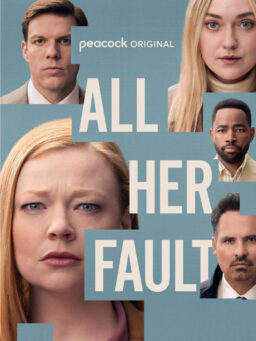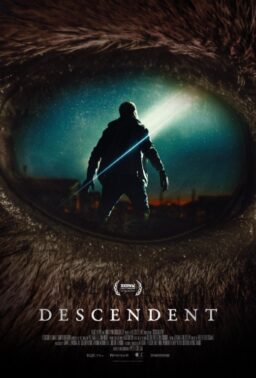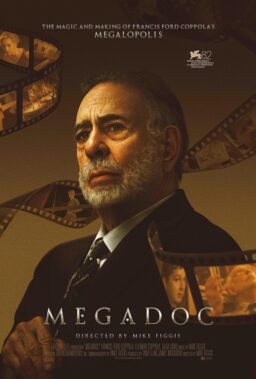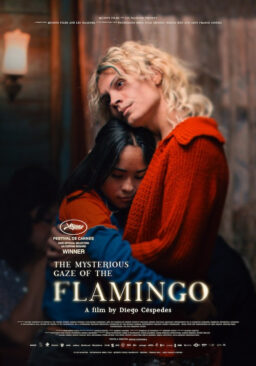As pleased as I am by the record-shattering success of Patty Jenkins’ “Wonder Woman,” the notion that an opening weekend gross single-handedly justifies the hiring of more women is downright embarrassing. If a man had helmed Jenkins’ 2003 debut feature, “Monster,” which earned Charlize Theron a richly deserved Best Actress Oscar, it would’ve likely added several major directing credits to his resume over the past 14 years. “Wonder Woman” is only Jenkins’ second feature, and it is unmistakably the product of her own vision, just as Ana Lily Amirpour’s sophomore directorial effort, “The Bad Batch,” couldn’t possibly have been made by anyone else. It arrives in theaters three years after her entrancing film about an Iranian vampire, 2014’s “A Girl Walks Home Alone at Night,” premiered to widespread acclaim. Amirpour’s visceral approach to genre filmmaking would make her an ideal choice to tackle any given superhero franchise, and in many ways, her central heroine, Arlen (Suki Waterhouse), is every bit as fierce as Gal Gadot’s demigoddess. After losing an arm and a leg to a ravenous cannibal, Arlen kills her captor and escapes, navigating her way across a Texas wasteland occupied by the muscular Miami Man (Jason Momoa), a mysterious hermit (Jim Carrey) and a revered figure known as “The Dream” (Keanu Reeves).
When I spoke with Amirpour prior to a sneak preview of “The Bad Batch” at Chicago’s Music Box Theatre earlier this month, the director told me that she had just attended a Cubs game. The team’s recent World Series victory was all the more endearing for Amirpour in how it nearly fulfilled the prophecy made by “Back to the Future Part II.” The conversation that followed touched upon her love of ’80s films, her bewilderment regarding dystopia and her recent infatuation with emojis.
On the night that you won the Breakthrough Director prize at the 2014 Gotham Awards, you told me, “You have to show your freaky freak flag and then you’ll find people who want to see that flag sail.” That approach seems to have paid off in a major way, considering the talent you’ve attracted for “The Bad Batch.”
This is going to sound super-heavy and deep, so I apologize in advance, but it really comes down to the question of, “What is a life worth living for me?” When I make a film, I have to set aside three years of my life, so during that period of time, I just want to be free, and to be free means to be myself—not faking or bulls—ting anything. I’m able to be honest if I understand what I’m making. If I don’t, then I can’t communicate clearly to all these people who I’m going to be with for so long in this intimate way. I just try to find material that makes a s—tload of sense to me, and then speak from that understanding. Making movies is so fickle. After the three years you spend making it, the film goes on and becomes this thing that interacts with human beings for many, many years in many, many ways. You don’t know how it’s going to effect people. Sure, there’s a business approach to controlling how movies go out, but I’m not involved in that right now. All I know is that this is how I spent three years of my life, and however the film turns out down the line, I know every day was worth it.

You’ve also mentioned that your cinematographer, Lyle Vincent, has been a “soulmate” collaborator on both features. How did you approach lensing the film’s sun-scorched landscape? Audiences will want to apply sunscreen before entering the theater.
I love hearing that! The visual style and aesthetic and feeling of this film are spawned from my love of the desert. I lived in Bakersfield, California, when I hit puberty, and the terrain there is similar to what you find in the Inland Empire. I watched lots of westerns with my dad, and Lyle shared my love of Sergio Leone films. Going into “Girl,” we would connect synergistically on so many levels. For this film, we referenced David Lynch’s “Wild at Heart” and Sergio Leone, but then also films like “Die Hard” and how it was shot on anamorphic lenses. I like the way all of John McTiernan’s films look. I watched “Predator” recently and I was like, “This f—ing movie rules. It is a masterpiece.” It is so hard to make a movie where the last 20 minutes are that good. You can have a really good opening act, but oftentimes, a film will start to run out of steam well before the end. “Predator” is awesome all the way through. I think “Alien” is like that too.
Did you have “Predator” in your mind while making “The Bad Batch”?
I guess to some degree. It’s weird saying that. I never referenced “Predator” once at any point, but now that I’m thinking of it, I could see that. In both films, you’re spat out into an unfamiliar world, and suddenly there are all different manner of things that come around—some are menacing and dangerous, other times you get lucky—and you have to fight your way through them all. If you put “Alice in Wonderland” and “Predator” into one of the pods from “The Fly,” you’d have my movie.
Both of your features center on the sort of women who are often victimized in horror films—encapsulated by the title, “A Girl Walks Home Alone at Night”—and you infuse them with tremendous strength and resilience.
These characters are a reflection of how I am in my life. I’m the weirdo who doesn’t connect to many people and goes around riding a skateboard before heading home and listening to my records. I might have some powers, and I might use them to f—k you up. Both of my stories began with the central characters. The girl was the first thing in “Girl,” and in the case of Arlen, I saw this girl in my head who was missing an arm and a leg. She was bleeding in the middle of a desert, but she was alive and I knew that she was going to survive. I felt like that at the time, and I think we all get chopped up by the things that happen to us. We’re all Arlens hobbling around this crazy, chaotic universe, just trying to figure it out.

I enjoyed how Jim Carrey’s role enables him to draw on his gift for pantomime. He’s recently appeared to be in a spiritual phase of his life, and you can feel that soulfulness in this character.
I love hearing you say that. He absolutely is the hermit. I remember having a conversation with him about that at the beginning. When you are as famous as he is, no matter where you go on planet Earth, everyone recognizes you and sees you—which means that nobody actually sees you. You’re invisible. It’s no different from the homeless guy everyone ignores on the street corner who’s holding a sign that nobody sees. Oddly, it’s two sides of the same coin, and I totally felt that with him. After my mom saw the movie in Venice, she asked me, “What about Jim Carrey? Did you cut him from the movie?” I told her that Jim was the homeless man, and she was like, “That dirty guy?!” [laughs] I’m getting verklempt just thinking about him. He is this human, kind soul at the center of this chaos. Everybody is getting caught up in these crazy behaviors and choices, and he just does good things to no benefit that you can see, apart from the simple act of doing them.
I was struck by his gift of the snow globe, which depicts the opposite sort of climate, allowing Miami Man to carry that image in his mind.
I was thinking about that snow globe on my flight yesterday. I never had to explain it to Jim. You get into a lot of conversations with actors, especially when your s—t’s so weird and surrealistic. Sometimes they’re like, “What does this mean? Why is he doing this? Why does she want this and that?” But Jim just knew. When Miami Man says, “I feel lost,” this is what Jim’s character chooses to give him.
You’ve spoken of your love for “Rumble Fish,” and there were times “The Bad Batch” reminded me of another Coppola film, “The Godfather,” in the sense of how it shows the cannibalistic nature of capitalism—how we feed on each other in order to care for our own kin.
That’s an amazing reference, and I’m gonna be happy to take it. There are a lot of strange things that have happened in the world, from the time I was making “The Bad Batch” to now. Those truths that you mentioned about how we treat each other have always been there. [Trump] wasn’t the president yet when “The Bad Batch” premiered last year in Venice, but the film was no less relevant. It’s not a post-apocalyptic film. I don’t understand dystopia because what it portrays as our future is actually our present. You can create your own little corner—a safe place where you make your paintings and go about your routine—and you can shelter yourself and the people you love from looking at the surrounding reality. There are walls around everything all the time, and you can choose to see what’s on the other side or not. Maybe if we all got on some chemical, we’d feel like we were living in a utopia, but that’s scarier to me. I love Nancy Meyers movies, where safe people live in a safe cubby and have their little dramas, but that’s not what my movie is aspiring to be. There’s all kinds of f—ked-up s—t in this world, man. It was f—ked up three years ago and it’s f—ked up today, only now, it’s getting amplified. It hasn’t suddenly shown up out of the blue. There was f—ked-up s—t the whole time Obama was around, but now it’s reached an absurdist level.

I’m curious about what inspired the big winking smiling face reminiscent of emojis on Arlen’s shorts.
They were directly inspired by Yolandi Visser from the South African group, Die Antwoord. The pimp in my first film was inspired by the guy [Ninja Visser] in that group. If people love Elvis as much as Nicolas Cage does in “Wild at Heart,” they’re definitely channeling him to a degree. Elvis is so loved that he has become this thing that shows up in the appearances of people forever. I feel that way about Die Antwoord. I find them so inspiring and so cool. Yolandi had those shorts and I wanted Arlen to have them as well. I’ve never used emojis, but when I was finishing editing this film, I met a boy who I liked and still like. We like each other, and he really likes emojis. But he’s so good at using them that they’ve given me feelings that I’ve never felt during texting. He also uses GIFs, and if you choose the right GIF at the right moment of a conversation, it can give you so many emotions. This technology is evolving so fast that I don’t think we ever, as a culture, have that much time to check in on things. We’re just caught up in it. There will be a new update that we have to run, and we’ll have no idea what it’s going to do. My friend made a “bitmoji” of myself, and I gave it my hair and headphones. Do you have your own bitmoji?
Not yet.
You haven’t given in yet. You’re judging yourself about it, and I did that too. I refused to do it for a long time but it was because of liking this guy who used them so freely and with such childlike passion that I finally caved in. He also works in tech in San Francisco, and I think that’s a whole other world. You and I are romantic, old school-loving people. I could tell just from talking to you that you were like that. There’s a romance to the younger kids in this generation.
Do you consider yourself an old-school filmmaker?
I definitely have a fetish for the iconic things that I love. Some of them are modern, such as Die Antwoord, but I also love James Dean. When I was a pre-teen, I had a poster of James Dean on my wall, right next to a poster of Keanu Reeves. I like stuff from the ’80s and ’90s because I grew up with them. I loved watching films like “Back to the Future” or “The Neverending Story” or “Die Hard.” They’re like faerie tales, and that’s what I want my films to be as well. I’m not making films to prove that reality exists. I’m trying to go into another altered state. I want to create an emotional reality without being committed to rules or physics. In a film, we can play, and the sky’s the limit for what we can create. That’s why I love the work of filmmakers like Guillermo del Toro or Edgar Wright. These are people who have fun with characters. If you look at the origins of all these superhero movies that they keep regurgitating, they were spawned from the same desire to f—k with big concepts of what’s good and bad, what’s right and wrong, and what a hero is in a fantastical way. It’s just too bad that there aren’t more people embracing the potential of these concepts.












